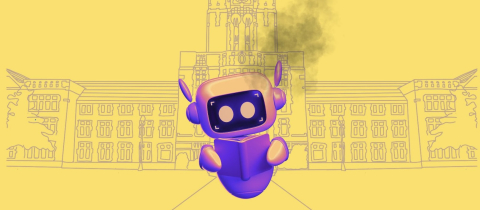As the NBA resumes its basketball season in Florida, sports journalists are pointing out that players will have the option to wear a $300 ring fitted with the latest technology to act as an early warning system if the player is coming down with COVID-19. This claim is based on a study, not yet published, that the ring makers conducted with a team at West Virginia University. Its press release claims the “digital platform” the team created--which uses artificial intelligence to interpret the data coming from the ring--can detect COVID-19-type symptoms “up to three days before they show up.” I decided to look into this because buried in this story about people dribbling inflatable balls is an exceptional claim: that we can detect an infection days before symptoms arise. Is this even possible?
Technology can speed up interventions in a pandemic. I’m thinking of Kinsa, which has commandeered its fleet of over 1 million smart thermometers to serve as a coal-mine canary. Imagine you and a dozen other people caught the coronavirus at a local event and you start spiking a fever. A smart thermometer, connected to the Internet, will relay this information to the company who will see an emerging cluster of fever cases in your area. As Dr. Peter Hotez, dean for the National School of Tropical Medicine, put it in The New York Times: “If this tells you where there are new major clusters of fever, it tells you where to swoop in with your test kits.” But a smart thermometer can’t predict your fever before it has taken your temperature. Could a ring?
The ring at the center of this NBA story is from a Finnish company called Oura Health. It is a type of wearable technology (see Apple Watch and Fitbit) that measures certain things about your body and relays this information to you in the hope that you will find it useful. What Oura ring measures is your heart rate (using infrared lights on the inside of the ring to see your blood pulse), your heart rate variability (the time between heartbeats and how it varies over time), and your skin temperature. It also keeps track of your steps, estimates the calories you burn, and furnishes its accompanying app with all kinds of bells and whistles like your “readiness” score and information on your sleep patterns. Getting to play with all of this personal data may sound tantalizing to the average consumer, but keep in mind that similar devices tend to end up in a drawer and that more data is not necessarily empowering. Changing our health habits and sustaining better ones is remarkably difficult.
The Oura ring was not designed to predict illness but in the midst of this pandemic it is now being used as such. What I would love to know is which measurement or combination of data points allegedly turned this ring into a crystal ball for “coming down with something.” At the time of publication, we have no answer. That study from West Virginia University making the bold claim? Still not published. I reached out to the university and to Oura Health. No response. The journalists covering the NBA story are also in the same boat: Oura Health did not respond to their inquiries. And while the University of California at San Francisco is conducting a similar study, they are still only enrolling participants, much less ready to broadcast results.
I puzzled over how the superficial measurements the ring makes could even predict the symptoms of an infection. What sign, buried in your body or clearly visible to a keen observer, would herald the appearance of a fever a day, two days, three days in advance? The scientific literature is not very chatty on the topic of predicting fevers. I found one paper studying how people move about in the world--the distances they travel, the number of unique places they visit--to forecast illness, but even if this works, a smartphone would suffice to track your movements. No need for a $300 ring. Another study injected volunteers with a substance that caused inflammation. Using a KinectⓇ motion sensing device, the researchers reported their volunteers would walk more slowly with less leg lifting and arm swinging (presumably to conserve energy when sick), but the change did not predict future illness: it was measured while volunteers were dealing with inflammation. If we’re interested in getting a whiff of the future, it turns out that one of the most telling early warning signs of a COVID-19 infection is loss of smell and taste (though it is by no means specific to COVID, as it is commonly reported for other respiratory infections and allergies). But this is not something a bedazzled ring would pick up on.
None of this helps explain how a tech ring could tell you days in advance that you will be ill. Until study data are made available, I can at least say that one thing is certain: pro-basketball celebrities wearing a cutting-edge gadget is a major publicity coup in the middle of this three-ring pandemic circus.
Take-home message:
- The Oura ring is a smart device that measures your heart rate, skin temperature and a few other metrics
- A press release from a university that partnered with the makers of the smart ring claims the ring can detect the symptoms of COVID-19 up to three days before they show up, but no data have been released publicly to assess if this exceptional claim is backed by good evidence







